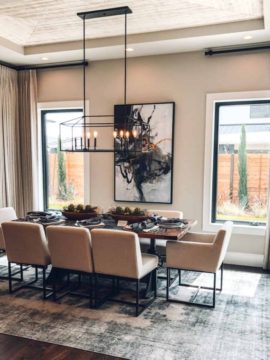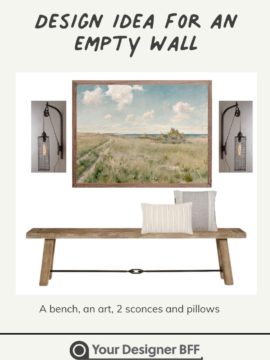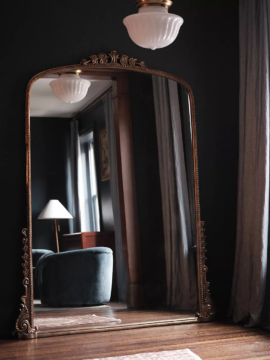Selecting a coffee table might seem like a straightforward decision, but there’s a science behind it. The coffee table is often the centerpiece of the living room, and it can either harmonize with the rest of the furniture or serve as a bold statement piece.
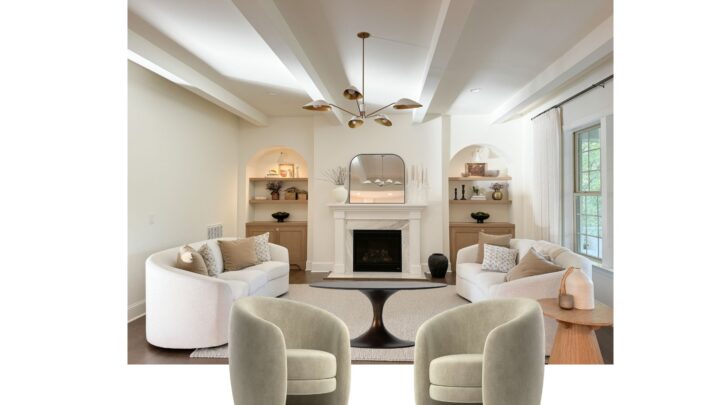
It’s not just about style – the right coffee table brings balance and functionality to the space. To make the best choice, you need to consider several factors, including the shape, finish, and how the piece ties together the room’s overall design.
In this post, I will go through the decision-making process for the coffee table for my living room, step by step, and show you what you need to know to make a decision for your living room. I will link all the tables I show so you can easily find them if you are looking for that particular coffee table.
Table of Contents
Choosing a Coffee Table Based on the Shape

The first step in choosing a coffee table is deciding on the shape. If your living room furniture is primarily rounded—such as curved sofas, chairs, or accent tables—you may want to balance the look with a rectangular or square coffee table. This contrast can create a more dynamic and visually interesting space. On the other hand, if everything in the room is angular, a round or oval coffee table can soften the lines and bring a sense of flow.
However, sometimes rounded furniture calls for a rounded coffee table to create a cohesive, harmonious look. Like in this example, the rectangular coffee table looks out of place in this room,
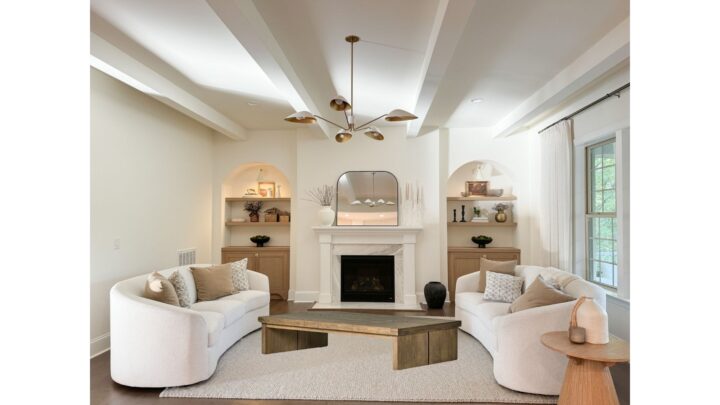
Choosing a Coffee Table Based on the Finish
Once you’ve decided on the shape, the next important factor is the finish. Coffee tables come in a variety of materials, with popular choices being wood, painted finishes (often black), or metals like brass, antique rust, and chrome.
Stone coffee table
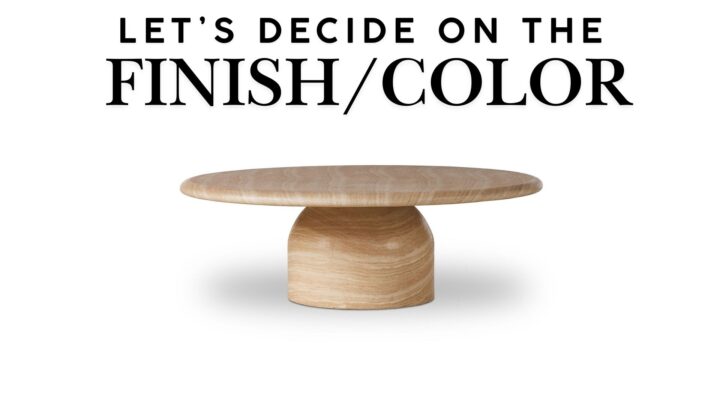
The finish should complement the style of your living room, whether you’re going for a traditional, rustic, or modern look. For example, wood adds warmth and a natural feel, while metal gives a contemporary, sleek edge. Remember, the coffee table is the finishing touch of the room, so this is your chance to make it a statement piece that either blends seamlessly or stands out.
I tried this stone coffee table in my living room and I don’t like how it felt like it was disappearing in the room and it felt matchy-matchy.
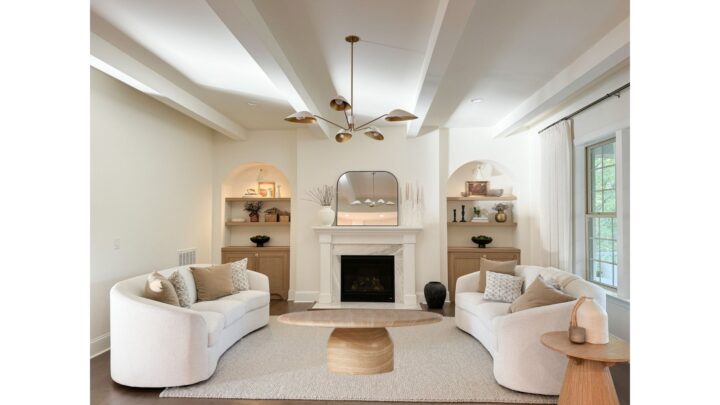
So I decided to try a similar stone coffee table, but black and white stone felt too stark against the overall muted tones of my living room.
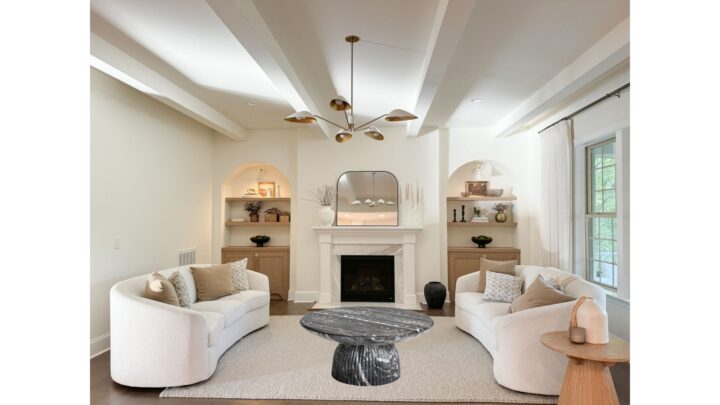
Foundry Select Tithi Single Round Coffee Table Stone
Wood coffee table
Next, I decided to try the wood-finished nesting coffee tables. Although I liked the concept of nesting tables, the wood tones didn’t complement the existing wood in my space, so I ultimately ruled them out.
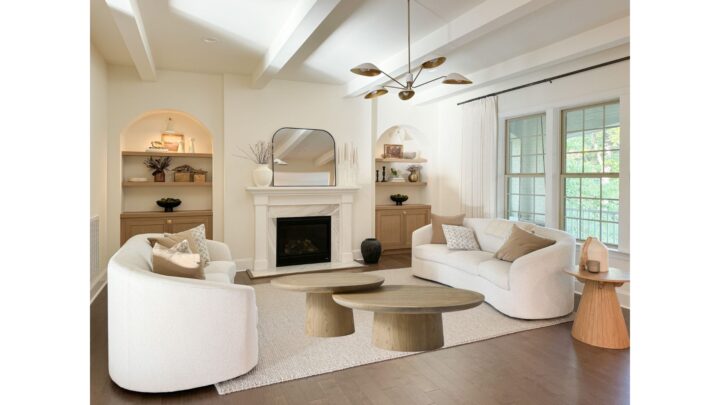
Radius Nesting Coffee Table (36″-69″)
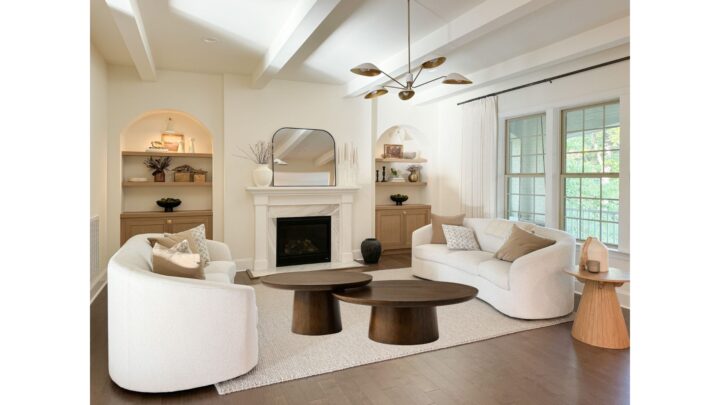
If your room already has wood finishes, it’s best to either match the new furniture’s wood tones or choose a different finish. Avoid mixing similar but mismatched wood tones. This guideline applies to major furniture pieces or built-ins, but not to flooring.
Velvet ottoman as a coffee table
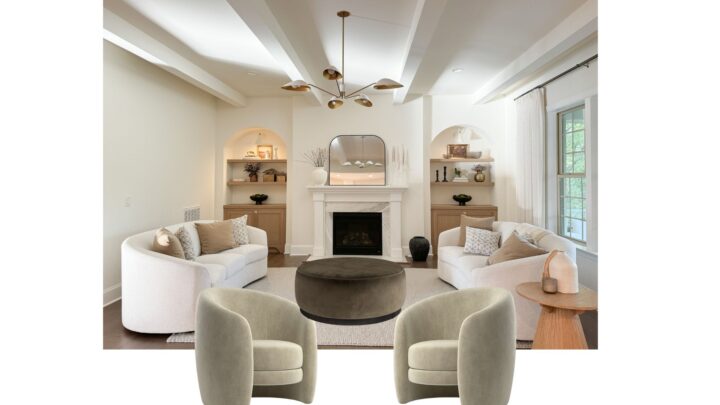
Next, I tried a velvet ottoman and loved how it complemented the look and feel of my living room. You can easily use an ottoman instead of a coffee table, as long as you’re okay with the extra maintenance it might need.
4o
Black coffee tables
Next, I decided to try a black coffee table, but I didn’t like how it looked against the overall muted tones of the room.
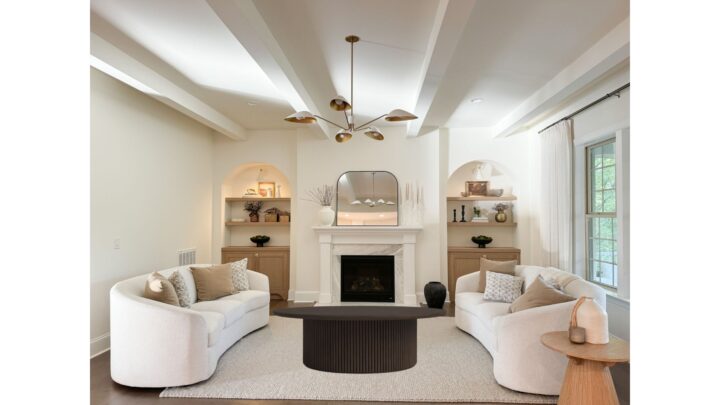
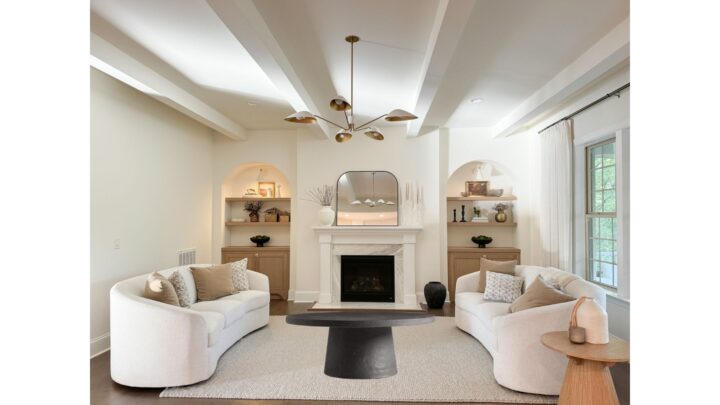
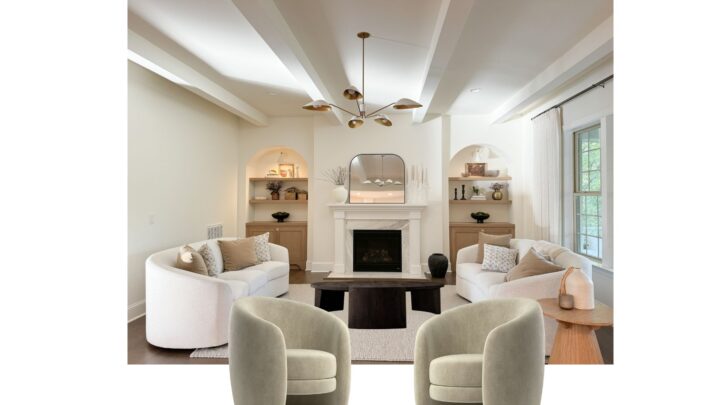
Aged brass coffee tables
I really liked how the aged brass coffee tables complemented the room, adding a touch of warmth and sophistication to the overall design. The metallic finish brought in just the right amount of contrast without overwhelming the muted tones of the space.
I’m also considering an oval coffee table. It would introduce a softer, more organic shape to the room while maintaining a balanced flow. The curved lines could add visual interest and contrast nicely with the more angular elements in the space.
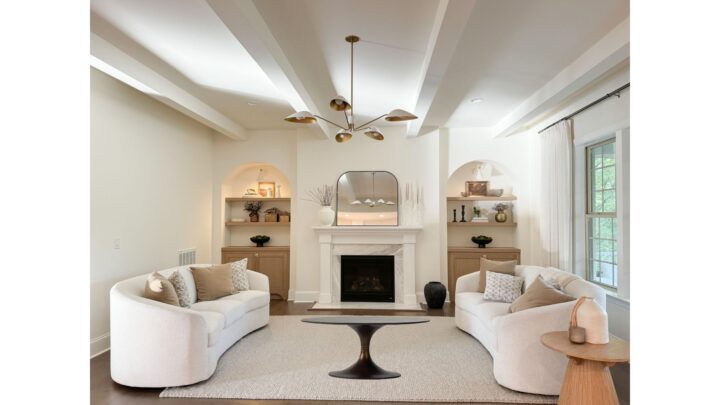
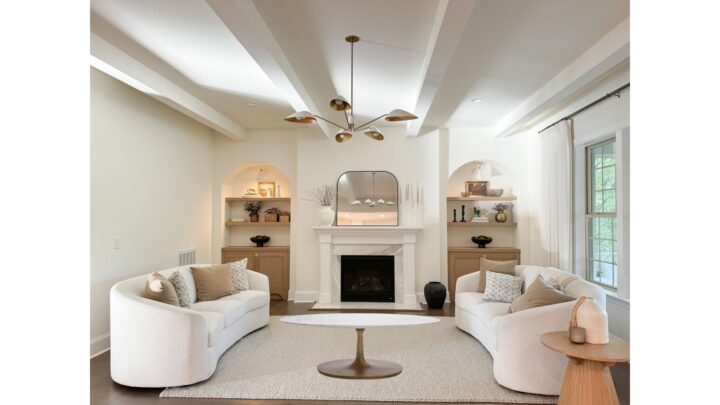
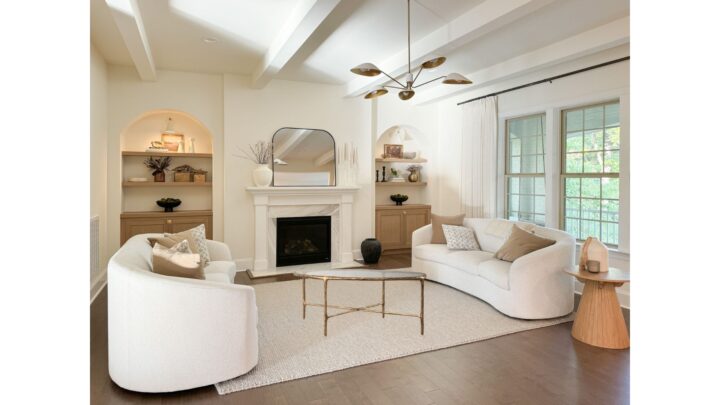
Products and specs
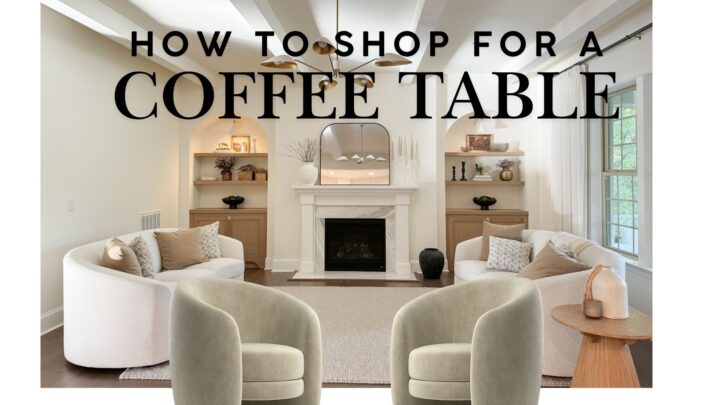
Ashleen 88.5” Round Arms Curved Sofa
Raelle 5 – Light Unique/Statement Pendant
Mitzi H285101-AGB/SWH Lupe – 1 Light Wall Sconce
Bhargava Large Mantel Mirror Arched Rounded Corner
Size and Placement: Getting the Proportions Right
Now that you’ve settled on the style and finish, it’s time to consider the size and placement of your coffee table.
Your coffee table should be approximately two-thirds the length of your sofa. This ensures that it’s proportional to the seating area without overwhelming the space or being too small to serve its purpose.
For comfortable use, the coffee table should be placed about 16-18 inches from the couch. This gives enough room for people to move around without feeling cramped, yet close enough to easily reach items on the table.
Ideally, the height of the coffee table should be level with the cushions of your sofa or slightly lower. A good rule of thumb is to aim for 1-2 inches lower than the sofa seat height.
As mentioned earlier, a coffee table should generally be two-thirds the length of the sofa. For example, if your sofa is 9 feet long, aim for a coffee table that is around 6 feet.
It’s best to avoid a coffee table that is higher than your sofa cushions, as it can disrupt the flow of the room and feel awkward for those sitting around it. Keep it slightly lower or at the same height for balance and ease of use.
The coffee table and TV stand don’t need to match exactly, but they should complement each other in style, material, or color. For example, a sleek TV stand paired with a rustic wood coffee table might look mismatched. Instead, aim for complementary finishes or tones to create cohesion in the room.
Conclusion
Choosing the right coffee table is an essential part of creating a harmonious and functional living space. By considering the shape, finish, size, and placement, you can find a piece that not only enhances your decor but also meets your practical needs. Whether you’re drawn to the warmth of aged brass, the softness of a velvet ottoman, or the elegance of a well-proportioned stone table, there are countless options to explore.
If you’re feeling overwhelmed or need personalized guidance, I’m here to help! Reach out for a design consultation, and together, we can find the perfect coffee table and elevate your living room to its fullest potential. Your dream space is just a consultation away!
Discover more from Your Designer BFF
Subscribe to get the latest posts sent to your email.
